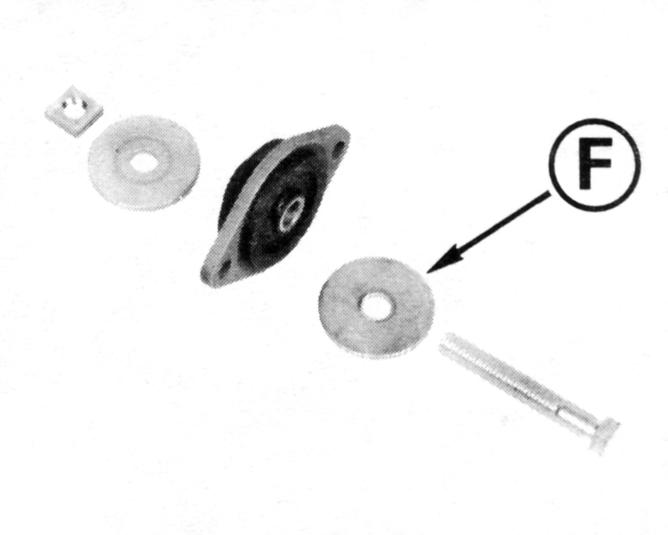
3 minute read
Power Steering System Diagnosis Chart
Table 1:
ConditionPossible CauseCorrection
SYSTEM NOISE:
Pump noise "chirp.”
Belt squeal.
Loose belt.a Adjust belt tension to specification.
Loose belt.a Adjust belt tension to specification.a
"Hissing" sound.Some noise exists in all power steering systems. "Hiss" may be expected when turning the steering wheel, particularly at low speed.
"None; a slight ""hiss"" is normal and in no way affects steering.
RattlePressure hose touching other parts of engine. Adjust hose position.
Rattle or chuckle.Steering system looseness.Check cable nut and cylinder pivot points for wear or looseness. Replace bushings if necessary.
GroanLow fluid level.Find and repair leak. Fill reservoir and bleed system.
Air in fluid.Fill reservoir, find and repair leak. Check connections, bleed system.
GrowlExcessive back pressure caused by hose restriction.
Locate restriction and correct. Replace part if necessary.
Pump growlIncorrect steering cable adjustment. Cable to boat interference. Adjust cable per procedure. Eliminate interference.
Whine in pump.Pump shaft bearing scored.Flush system, replace pump.
SYSTEM OPERATION:
Excessive wheel kickback or loose steering (not boat wander).
Steering cable attachment loose. Replace pin. Tighten steering cable anchor nut.
Air in system.Add fluid to pump reservoir and bleed system. Check all connections.
Steering wheel surges or jerks when turning with engine running, especially during slow speed operation.
Loose pump belt.Adjust tension to specification. Air in fluid.Fill reservoir, find and repair leak. Bleed system.
Insufficient pump pressure.Replace pump if defective.
Table 1:
ConditionPossible CauseCorrection
Momentary increase in effort when turning wheel fast to right or left.
Pump belt slipping.Tighten or replace belt. If oily, fix leak.
Low fluid level.Fill reservoir and bleed system.
High internal leakage.Replace pump if defective.
a.Does not apply to serpentine belt systems
External Leakage
General Procedure
1.Wipe suspected area dry.
2.Check for overfilled reservoir.
3.Check for fluid aeration and overflow.
4.Check hose connections - tighten if necessary.
5.Determine exact point of leakage.
6.When service is required, replace component.
Leakage Checks
Although some leaks are easily found, seepage type leaks may be difficult to pinpoint. Locate seepage leaks as follows:
1.With the engine off, wipe the complete power steering system dry (pump, hoses, and connections).
2.Check the fluid level in the pump reservoir and adjust as directed.
3.Start the engine and turn the st eering wheel from stop-to-stop several times.
4.Find the exact area of leakage.
Easily Fixed Leaks
1.Loose clamp on pump return hose.
2.Loose pump or cylinder hose fitti ng. If fittings are not crossthreaded, tighten to correct torq ue. See Torque Specifications.
3.Damaged O-ring on pump pressure fitting. Replace O-ring.
4.External leakage of power cylinder. Replace power cylinder.
5.Leakage of fluid in cooling water. Replace oil cooler.
6.Damage or cracked hose. Replace hose.
If the return hose is removed, the clamp must be replaced with a worm drive clamp. Replace leaky hoses.
Pump Leakage
1.An overfilled pump reservoir can cause a leak. The fluid in the steering system expands as it heats up during normal usage and fluid level rises in reservoir. Excess fluid is forced through the breather cap hole where it may be sprayed over the engine by the drive belt.
2.Install new O-ring. Tighten hose fitting (A) to 15-26 ft. lb. (20-35 N•m). If leakage persists, repl ace pump or hose as required.
3.Check torque on fitting (B). Tighten to 37-75 ft. lb. (50-102 N•m). If fitting is not loose, replace pump.
4.Check fluid level (C). If leakage persists with fluid at correct level and cap tight, replace cap or pump.
5.Some non-repairable pump leakage areas are marked with the oildrop symbol. If leakage occurs in these areas, replace pump.
Pump Pressure Test
1.With engine off, disconnect high pressure (output) hose at pump. Use a spare pressure hose (D) to install Kent-Moore Tool, J-5176 (E) between pump and steering cyli nder pressure hose (F). Gauge must be positioned between shut off valve and pump. Connect steering cylinder pressure hose to shutoff valve. Open shutoff valve.
2.Remove filler cap from pump reservoir and check fluid level. Fill pump reservoir to full mark on dipstick. Start engine, momentarily hold steering wheel against stop, and check connections at tool for leakage.
3.Bleed system as outlined under Purging Air From Steering System.
4.Insert Kent-Moore Thermometer Tool, J-5421 into reservoir filler opening. Start the engine and move steering wheel from stop-tostop several times until thermometer indicates that hydraulic fluid has reached its normal operating temperature of approximately 150° to 190° F (65° to 88° C).
5.Check fluid level; add fluid if required. When engine is at normal operating temperature, the pres sure reading on the gauge (valve open) should be in the 50-100 PSI (345-690 kPa) range. If pressure exceeds specifications, c heck the hoses for restrictions.
6.Pump relief valve pressure can be checked by momentarily closing the shutoff valve. Do not leave valve closed longer than it takes to read gauge; high hydraulic pressure s are developed. Relief valve pressure is approximately 10 00-1100 PSI (6895-7584 kPa).
Replace pump if fluid pressures or temperature do not meet specifications.




